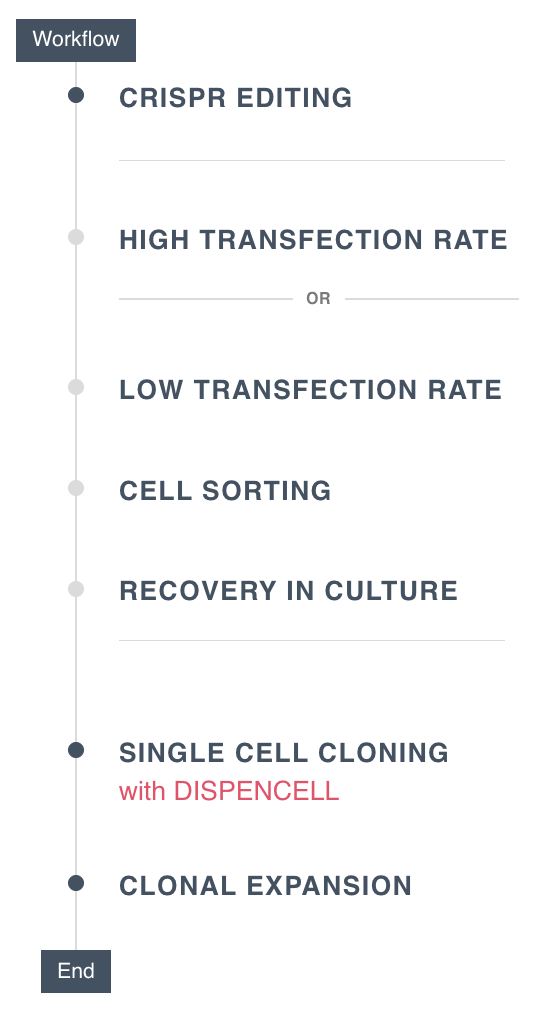
CRISPR-mediated gene editing
High Cloning Efficiency.
CRISPR technology is a powerful genome engineering tool used to target specific DNA sequences for low-cost and easy editing. The advent of CRISPR as a gene editing tool has revolutionized drug discovery and accelerated therapeutic development by providing versatile workflows that enable researchers to edit their desired target genes efficiently. Its wide range of applications include basic biological research, development of biotechnology products, and treatment of diseases.
Workflow.
In such workflow, cells are first transfected with a CRISPR construct and then recovered in culture. If the CRISPR transfection rate is high, cells are cloned directly using DispenCell. When transfection rate is low, subsequent selection or enrichment of positive cells is required before they are cloned.
Benefits.
DispenCell’s efficient yet gentle dispensing, prevents the cells from losing their integrity, therefore combining the speed and the gentleness necessary to clone your cells in a quick, viable and effortless manner. A proof of monoclonality report provides you with a single cell signature signal immediately after dispensing, thus allowing you to check for monoclonality in a time and cost-effective manner.
Learn more about how DispenCell integrates into different workflows in its application notes.
